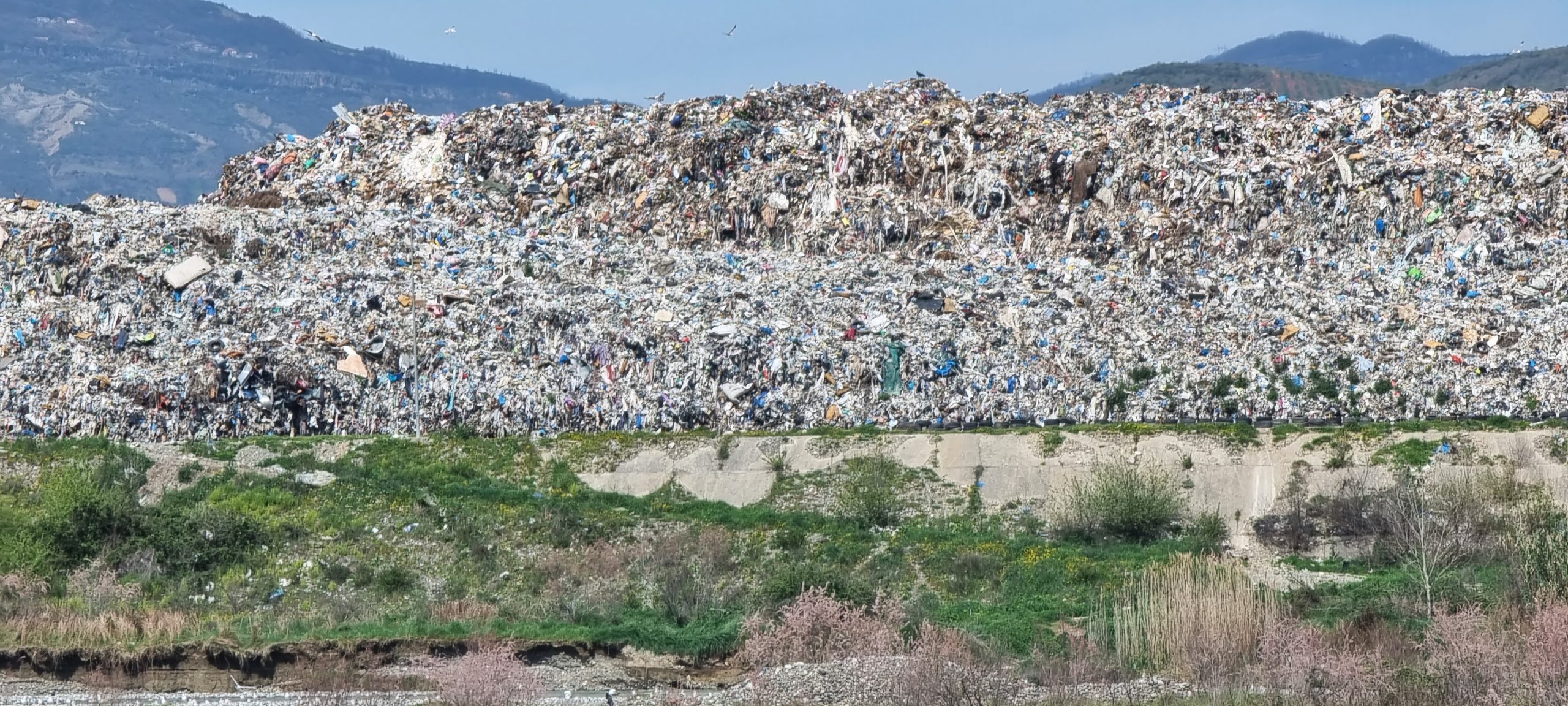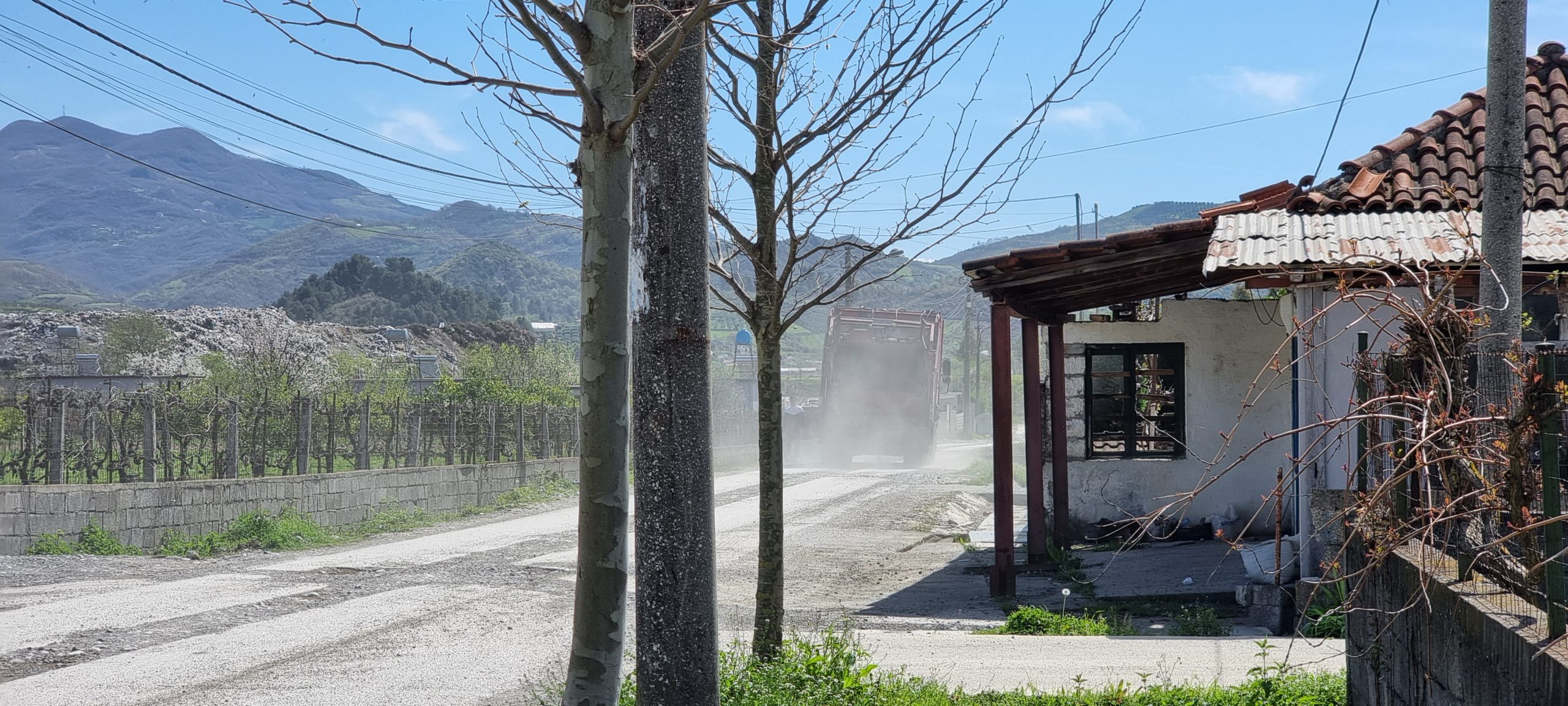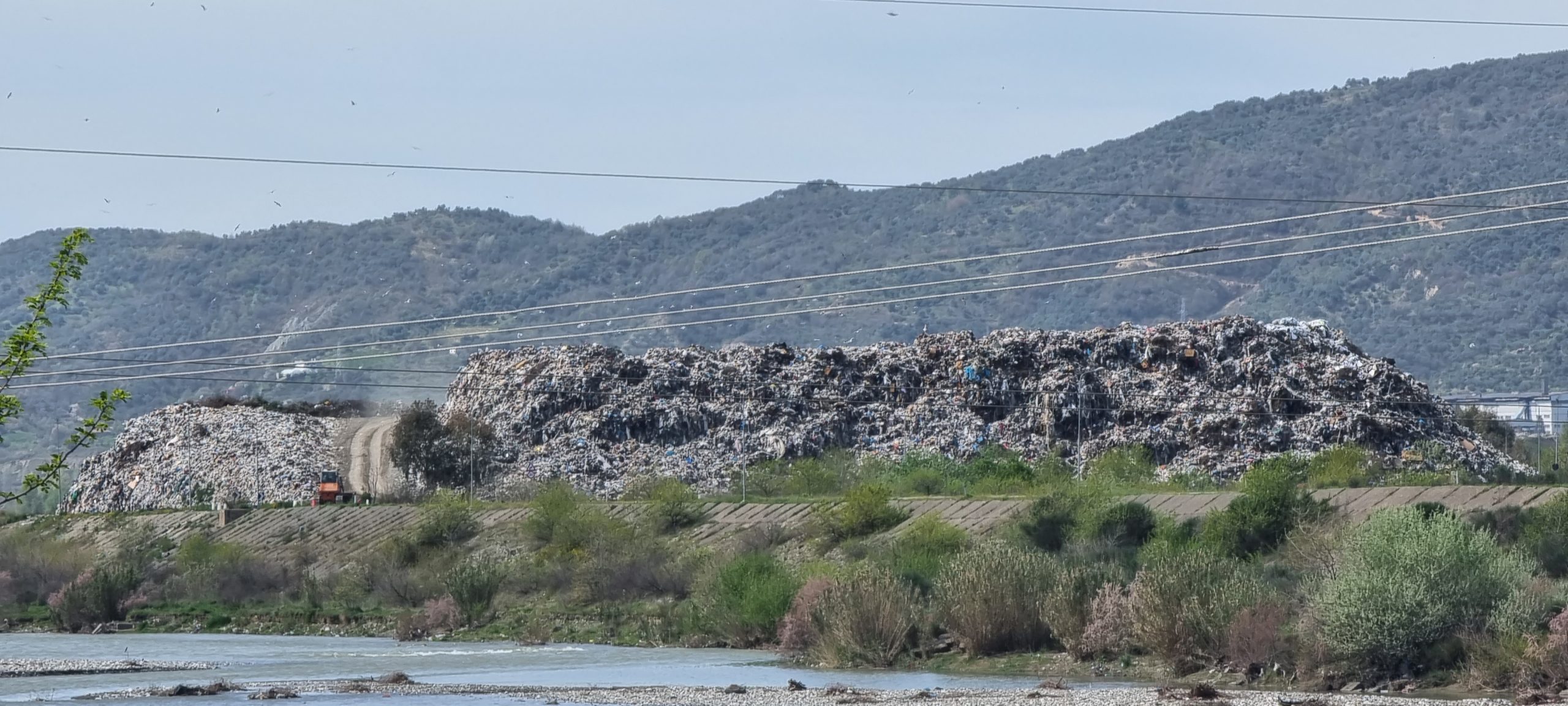In April 2017, when work began on the Elbasan incinerator for the first time, the government boasted that the plant would eradicate environmental ‘cancer’ by producing energy from waste. Six years later, Elbasan is on the brink of an environmental disaster because the incinerator isn’t working, despite spending millions of lek. Even the production of green energy seems like a distant dream. Since December, the waste processing plant in Elbasan has undergone its next round of maintenance. Municipal waste from the county’s municipalities, accumulating near the landfill, is raising the mountain of untreated waste. Environmental experts find the situation alarming and call for immediate intervention.
Esmeralda Topi
In March 2015, construction began on the first waste processing and energy production plant in Albania, next to the former metallurgical complex in Elbasan. According to the government, the incinerator would provide a solution to waste collection and disposal while producing green energy through their technological treatment.
“It’s a plant set up for the first time in our country, but with this installation, it also lays the groundwork for completely transforming all environmental relationships in their infancy, relationships with waste, with garbage that for over 20 years suffocated Albania, went out of control, and that we have decided to turn from a source of pollution and cancer into an energy source,” said Prime Minister Edi Rama, at the start of construction for the plant, which was expected to produce around 17,250 GWh of energy annually when operational.
Two years later, the Prime Minister, along with several other high-ranking officials, returned to Elbasan to inaugurate the start of plant operations. On the afternoon of April 18, 2017, amidst hundreds of attendees, the head of government inaugurated the Elbasan incinerator – the first waste processing and energy production facility in Albania.
“From the field of waste that burned in the open sky and polluted the entire city, to the sanitary field of European standards where waste is utilized for energy production,” emphasized the Prime Minister during the inaugural ceremony.
Six years later…
The Elbasan incinerator cost the state budget 26 million euros and is the smallest of the three planned plants. Currently, this plant is the only one completed out of the three expensive public-private partnership contracts of the Albanian government, which are being investigated for corruption and embezzlement by the Special Prosecution Office, SPAK. Despite propaganda about the technology and the solution it would provide in waste processing, in these six years, the plant has not delivered the promised results.

Data obtained by Faktoje indicates that the incinerator was operated with hope, shattering the major award for the environmental rejuvenation of Elbasan, which has increased the mountain of untreated waste. “In 2023, the ignition of the Plant was realized in April, and the extinguishing process was realized in December 2023. Currently, the Plant is under maintenance,” said Faktoje to the public company Eco-Elb, which has been managing the incinerator since December 2021 (through a lease contract with the Agency for the Administration of Seized and Confiscated Assets, AAPSK).

Since December 21 of last year, the Elbasan incinerator has shut down its turbines and once again undergone maintenance, but the company EcoElb did not provide any explanation of what caused the defect and how much its repair costs. Also, unanswered remained the questions of when the incinerator would be operational again and what would be done with the mountain of untreated waste in the landfill when the turbines were restarted.
The Waste Mountain by the Shkumbin River
For four months, all the waste from the county’s municipalities being deposited in the landfill is not being processed, creating a waste mountain that is endangering a new environmental crisis in Elbasan. “Today, pollution is dumped into the Shkumbin River and reaches the Adriatic Sea because all waste, leaks, go into the river because there is no protection. Without any prior treatment, the pits are filled and turned into mountains,” argues Ahmet Mehmeti, an environmental expert, for Faktoje.
“A black hole of finances that has turned into a black mountain that is only a source of evils,” he continues, adding that waste mountains are a potential risk for fire outbreaks, intentionally or unintentionally.

According to biologist Olsi Nika, the situation created by the waste in Elbasan is an “ecological emergency.”
“Entire mountains of waste will be made, they will not burn for 1001 reasons (not under investigation, not corruption, not defect, not accident). They will not burn because there has never been any consideration for an incineration process there; it was only thought about the scheme that has come out in the media. And then, a real ecological emergency will occur,” warns Nika from Eco Albania.
Last year, the Elbasan plant received an average monthly amount of waste from the County’s Municipalities of 3936 tons per month, or 47 thousand tons of waste. “The average daily amount of waste reaching the Plant is 140 tons per day, and when the Plant is in operation, an average daily amount of waste of 90 tons per day is incinerated,” informs Eco-Elb, which manages the incinerator.
Green Energy: A Dream in the Drawer
The government promised that when the Elbasan incinerator became operational, about 17,250 GWh of energy would be produced from waste processing annually. But data secured by Faktoje shows that the amount of energy produced by the Elbasan incinerator in recent years falls far short of the public promise.
“They replaced recycling with the deceit of energy production. So, funds are taken, but the work is not done, causing damage multiple times, both financially and environmentally,” says environmental expert Ahmet Mehmeti.
The Energy Regulatory Entity informs Faktoje that last year, the urban waste processing plant in Elbasan did not produce any electrical energy. “From the reports of OSSH sha and FTL sha/ OSHEE Group sha submitted so far to ERE, it appears that the Central Urban Waste Processing Plant of Elbasan County of the company “ECO – ELB” sh.a for the year 2023 did not generate electrical energy in the electricity distribution network,” states ERE.
While during 2022, the incinerator produced 6,792 GWh of electrical energy, a quantity that does not match what is declared by the company Eco-Elb managing the incinerator. “The amount of energy produced during 2022 is 75.9 GWh,” Eco-Elb told Faktoje.
Coexistence with the Incinerator…
Dozens of families live near the waste processing plant in Elbasan. Conversations with some of them are difficult. They are concerned but at the same time afraid to share their daily problems with the media.
“As it ignites, as it extinguishes, for us, the situation is as if not worse. In summer, we close the windows because the smell of waste becomes unbearable,” says a resident of the area, pointing to the waste mountain in front of her house.
The only one willing to speak was the village elder. Jashar Mucci was working the land in front of his house when we met him. The pensioner tells us that living with the incinerator becomes difficult when the plant is out of operation.
“When the plant is operational, we have no problems; it is clean. But now it is out of order, and you see for yourself,” he says as our conversation is interrupted by a waste truck heading towards the landfill.

“Do you see this truck passing by?! Here, waste trucks never stop, day and night. They come from the entire county,” Mucci continues.
He remembers well the promises of the government when work began on the plant. “Employment would increase in the area, we would be saved from waste, energy would be produced from which we would heat ourselves, and we would build greenhouses… oh, so many things would happen, but we don’t see them…” he scoffs at the end of the conversation.
This article was written by journalist Esmeralda Topi, with the support of Journalismfund Europe.











